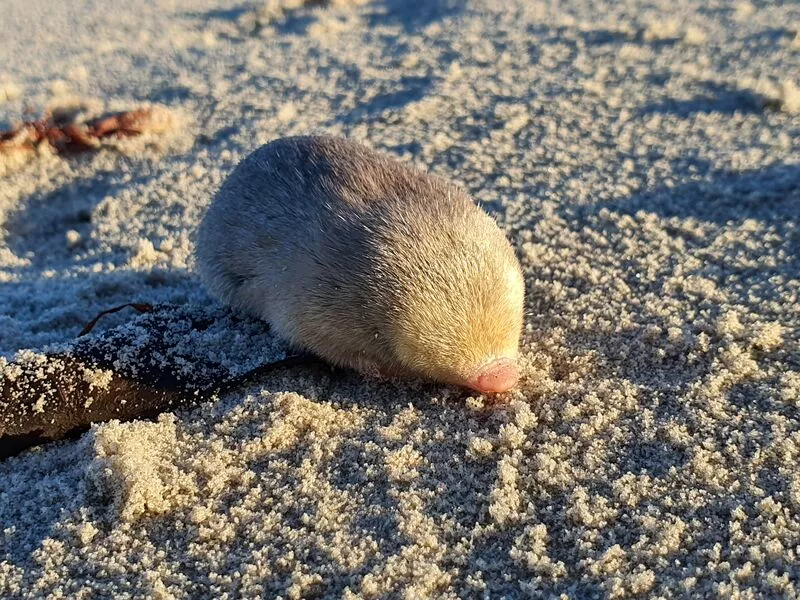A team of conservationists have rediscovered a species of golden mole that hasn’t been seen in almost 90 years. The scientists tracked it to its home in the sand dunes of South Africa using environmental DNA (eDNA) and sniffer dogs.
De Winton’s golden mole is an elusive species that had only ever been found in one small region – Port Nolloth, on the northwest coast of South Africa. As the name suggests, this cute little critter is blind, has an iridescent gold coat and spends most of its time underground. That habitat makes it hard to find, especially since its extremely sensitive hearing helps it pick up vibrations from people walking around on the surface. Plus, it tunnels through sand, so its burrows usually collapse behind it leaving little trace.
As such, De Winton’s golden mole hasn’t been officially sighted since 1936. Whether it still existed or had since gone extinct has remained unknown for the past 87 years, earning it a spot on Re:wild’s Most Wanted Lost Species list – a program for coordinating searches for species whose status is unclear.
And now, De Winton’s golden mole has officially been rediscovered, making it the 11th “lost” species to have been found since the program launched in 2017. Previous rediscoveries include the silver-backed chevrotain in Vietnam, the Somali sengi in Djibouti, Voeltzkow’s chameleon in Madagascar, the Fernandina giant tortoise in the Galápagos, and Wallace’s giant bee and Attenborough’s echidna, both in Indonesia.
Finding this rare mole was no easy feat. Not only does this skittish critter live in mostly inaccessible environments underground, but with few details on its appearance, genetics and behavior, it’s tricky to differentiate De Winton’s golden mole from the other three closely related species in the area.
So the team turned to two intriguing new techniques to track it down. The first is eDNA, which is genetic information that animals shed into the environment as skin, hair or bodily fluids. The second is using a sniffer dog to help find the animal in a vast expanse of sand dunes.
That raises an obvious question – how can a sniffer dog be trained to hunt down an animal without good samples? The solution the scientists came up with is ingenious: they trained the dog to sniff out the three known species of golden mole. On an expedition to Port Nolloth in 2021, the team came across fresh tracks and burrows that held their shape thanks to recent rains, and Jessie the sniffer dog didn’t sit down, indicating they were from a species she didn’t recognize.

The researchers collected over 100 soil samples from the area, and analyzed the eDNA in them. Four species of golden mole were detected, including the three known species and one that couldn’t be identified.
That alone wasn’t enough to declare the creature back from the dead. But in January 2022 a gene sequence from a museum specimen of a De Winton’s golden mole was publicly released. When the team compared their mysterious eDNA to that sequence, it was a match.
In the time since, four populations of De Winton’s golden moles have been identified, but there are still plenty of questions remaining. More research into the animal will be needed to determine what level of conservation it may need and how best to ensure its survival. Thankfully, the next generation of sniffer dogs can now be trained to directly track the creatures.
The study also provides an intriguing proof of concept for using eDNA to identify species – a technique that has also helped scientists rediscover several lost frog species in Brazil.
The research was published in the journal Biodiversity and Conservation.




